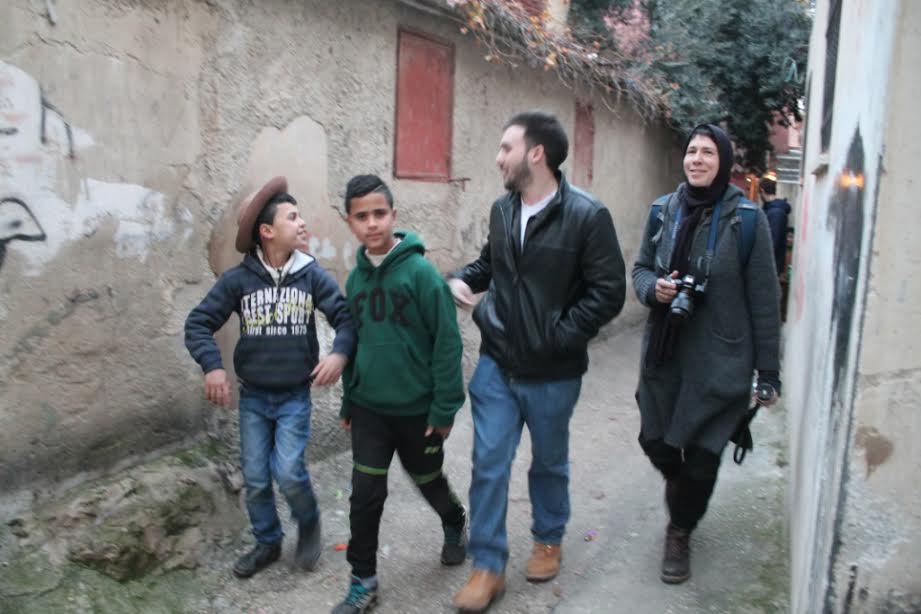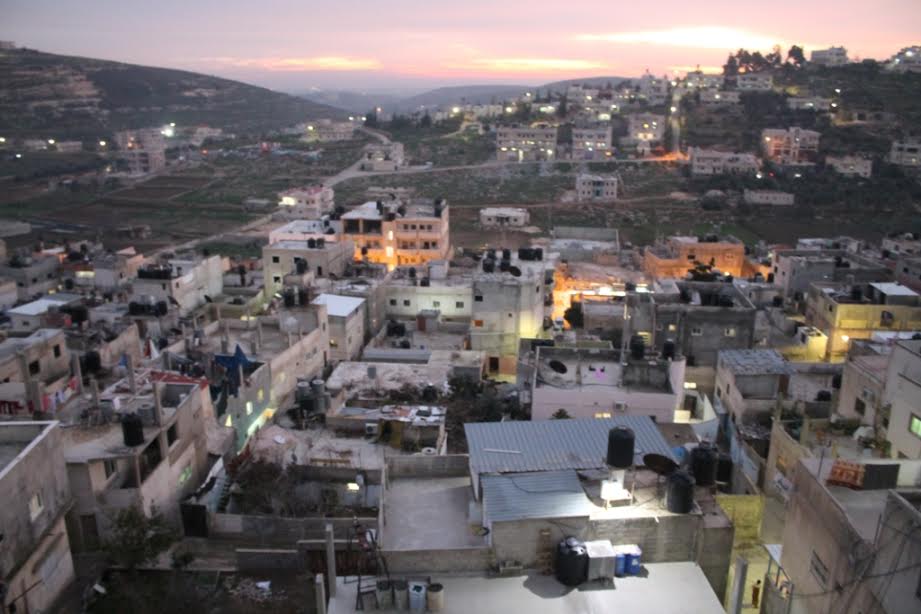Visiting a Refugee Camp in the West Bank by Dana Visalli: There are 19 official ‘refugee camps’ in the West Bank, all of them established between 1948 and 1950 to give refuge to Palestinians driven out of their homes and villages by Israelis during the so-called Arab-Israeli War in 1947-48. During that war, around 85% (720,000 people) of the Palestinian Arab population of what became Israel fled or were expelled from their homes, to the West Bank, the Gaza Strip, and to the countries of Lebanon, Syria and Jordan. Another 300,000 lost their homes in the 1967 war.
The Palestinian Arab refugee and displaced population has grown to be the second largest in the world, numbering an estimated 5,000,000, second only to an estimated 11,000,000 Syrians displaced by the Syrian Civil War. They are also the world’s oldest unsettled refugee population, with the original displacement dating back 70 years.
In late February of this year (2018) a group of volunteers and staff from The Excellence Center in Hebron visited the Fawwar Refugee Camp on the outskirts of Hebron. We spent the majority of our three hours there sipping tea with a family in the living room of their flat and conversing about life in the camp. The hospitality was exceptional, and in fact, we did not just sip tea but also coffee, cola, fruit juice and water, and were served a variety of fruits, cookies, and other treats. They may well have borrowed from all of their neighbors to make such array of offerings possible.
(Visiting a Refugee Camp in the West Bank ) Because these ‘refugee camps’ are often 70 years old, solid dwellings have generally replaced the original tents in the camp. In 1956 the United Nations Relief and Works Agency build concrete block flats for the refugees and distributed them according to family size. It is a positive thing that these people have solid walls and a roof over their heads, but life in the camp in no way compares to the homes and the homeland they were driven out of, where village life went back for generations, and life was lived close to the land. Life in the camps is impoverished financially, physically and spiritually compared to what village life had been before the catastrophe in 1948.
Nothing functions well in the camp (Visiting a Refugee Camp in the West Bank ). There is a paucity of water (in fact the Israelis recently confiscated one of the two wells there), electricity is intermittent, there is only the most basic of healthcare and the clinic closes frequently, and, there is almost no real work nor income available to the adults in the camp. The refugees for years served as a physical labor force for the dominating Israeli settlers; there is a large Israel settlement a few kilometers away.
But as tensions have continued to rise between those who lost their land and those who stole it, fewer and fewer Palestinian laborers are allowed into the settlement or into Israel, compounding the already dire straits of the inhabitants of the camp. The actual objective of the Israelis is to drive the refugees out of Palestine, but the people’s deep connection to their homeland remains firmly rooted, and they have no plans to leave.
Given all that adversity, it is nevertheless not unreasonable to claim that ‘hope springs eternal’ at the camp. The first evidence of this was a young Palestinian man of 22 years who joined our conversation at the camp. He had an unusually exuberant smile and joyful face, so much so that I asked about him. It turns out he had spent four of his 22 years in an Israeli prison for some act of resisting the occupation of his homeland. He stated that sacrificing that time for the well-being of his people made his inner spirit grow stronger, and the life was richer after prison than before.
Visiting a Refugee Camp in the West Bank: The other well-spring was the natural and inevitable beauty laughing enthusiasm of the young children playing in the narrow alleyways of the camp; all children all over the world have this quality. They were too young to understand the disaster of the invasion and occupation by Israelis that have befallen their people, and they were not so old that they had had their joy in simply being alive stripped away by life’s burdens. In this way the children certainly are our teachers, showing us how to enjoy the miracle of life when neither the past nor the future is a burden.”




